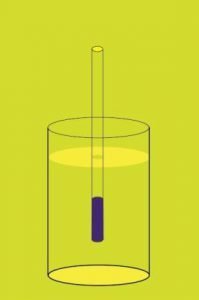Drone

In aviation and space, a drone refers to an unwritten plane or spacecraft. Another word for this is “unmanned aerial vehicle” or UAV. On Earth, drones are often used for military purposes because they do not endanger the life of the pilot. Apart from this, the drones don’t need rest, so they fly until the craft completely run out of fuel.
Technically speaking, the spacecraft drones may contain cargo spacecraft, satellites, and machines, which leave the earth, although they are usually not referred to this way. Perhaps the best example of a drone in space is the US Army’s mysterious X-37B space shuttle, which has created several flights in the classroom for hundreds of days at a time. Its mission has been highly classified, from which it is being speculated what it is doing.

Military drones
The drones have been around for as long as the aircraft has been used in the war (1911), and these bombarded balloons are not included which were first used by Austria in the mid-1800s.

During the First World War, the U.S. Navy developed limited “air torpedoes”, but kept the concept separate until World War II. At that time, the Navy started a program called Operation Annville according to The Nation. Remote-controlled B-24 bombers were used to deliver explosive to German bunkers, but the program was “disaster”, according to the article. Many aircrafts have crashed or exploded before the time.
Decades later, the United States focused on the use of rockets, while working on drone development. The first major demonstration of the drones was during the 1991 Gulf War, when the United States deployed the UAV.
According to a global forecast published in Researchandmarkets.com, the price of the drone market in 2018 was approximately $ 20 billion. While military applications are possible, the consumer market has exploded in recent years with drone options, so that ordinary people can blow up these small planes for monitoring all types of purposes – photography, entertainment and in some cases. Drones can also be used for applications such as distributing fertilizers in farmers’ farms or monitoring remote pipelines.
Drones for other applications
In the last decade, the use of drones outside army has increased considerably. Beyond the monitoring and distribution applications, UAV is used in dron journalism, search and rescue, disaster response, property protection, wildlife surveillance, fire fighting, communication relays, health care and agriculture.

The integration of drones and Internet of Things (IoT) technologies has led to many enterprise usage cases. The drones working on the ground with the IoT sensor network can help agricultural companies monitor the land and crops; Energy companies survey the power lines and operational equipment; And insurers monitor properties for claims and policies.

An experiment in 2015 in Austin, Texas showed that the drones could potentially “connect the dots” using IoT. A security technology company, along with a drone startup, tried to provide an IoT network for victims of Zb Beacon, which was present in the residential and commercial areas of the city. Companies said that the results were quick and instructive.

Security from logistics to agriculture, unmanned aerial vehicles and IoT are often part of the same discussion; Offering a component in ubiquitous connectivity and interactivity.


